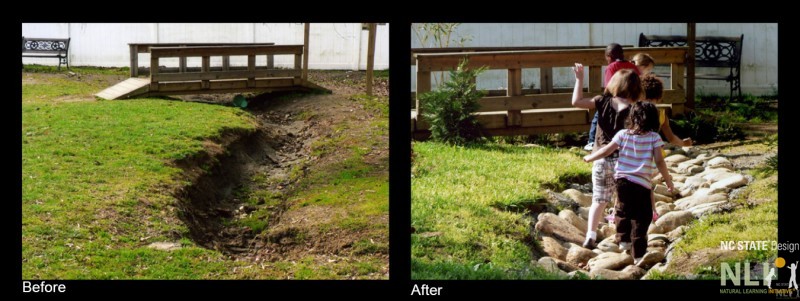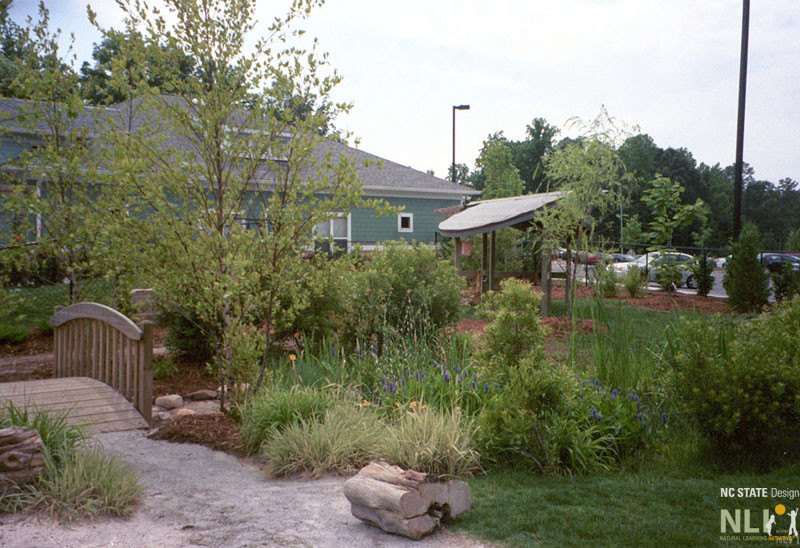The Green Desk
Draining Wet, Muddy Areas
How do you drain a wet play area?
Improper drainage can be a major barrier to using the childcare center outdoor learning environment (OLE). For areas that are frequently wet and muddy, here are some ideas to improve drainage:
Install area drains or a French drain.
Install a vegetated swale
Plant wet areas with native wetland or bog plants.
Create meandering paths with materials that rise above the wet, muddy areas.
MYTH: Water hungry plants such as willow dry out wet areas.

Thanks to Juliet Robertson, outdoor learning consultant, North East, Scotland, UK, for submitting this question. Her blog, I’m a teacher, get me OUTSIDE here!, is very informative and insightful.


